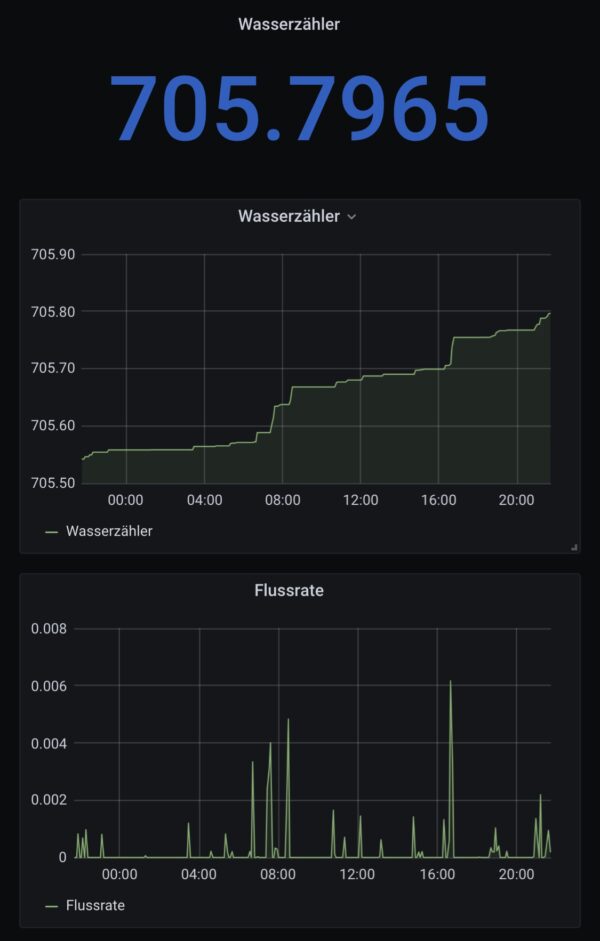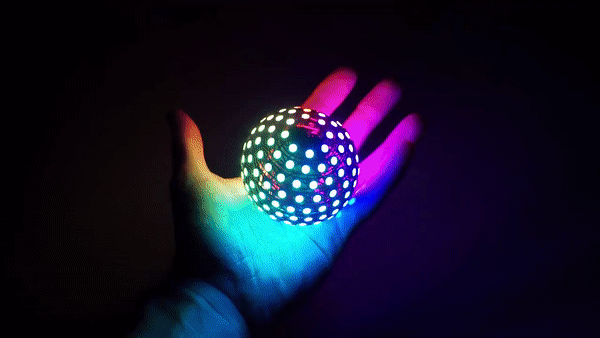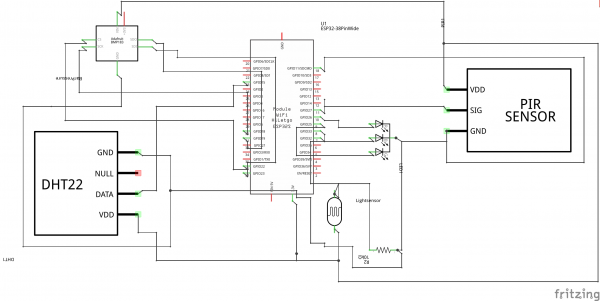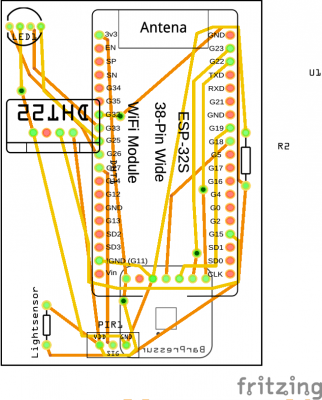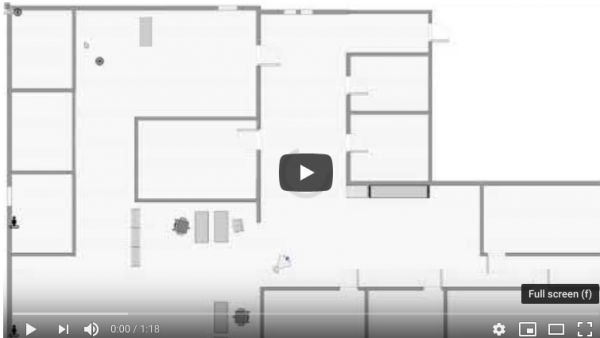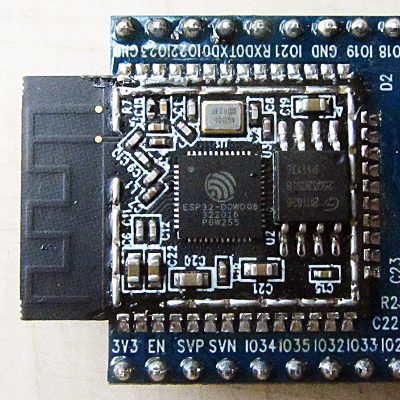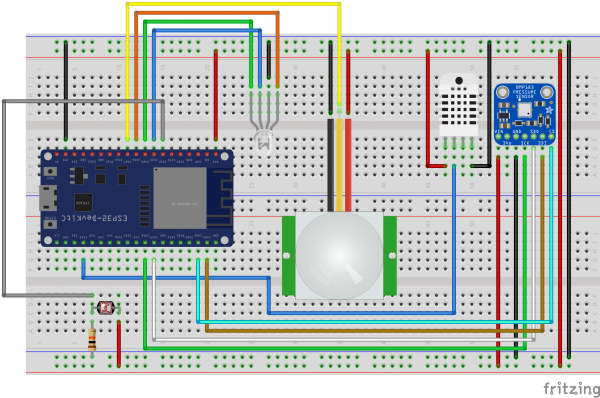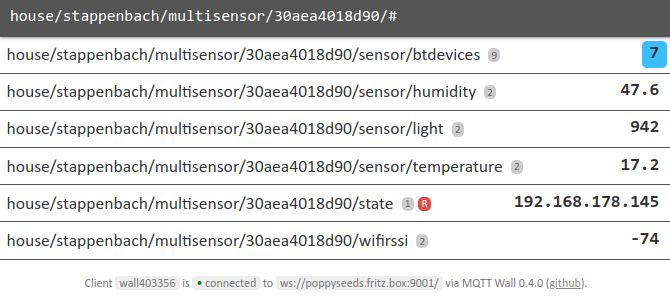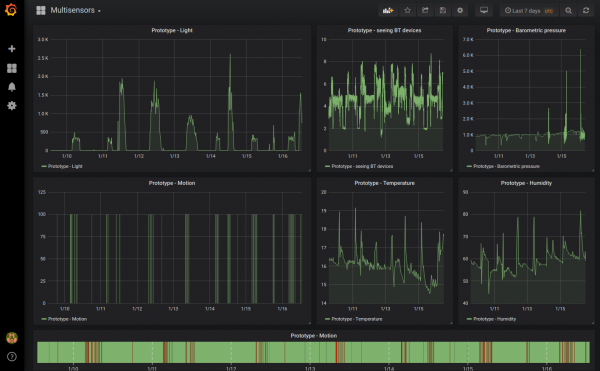The only meter in our house that I was not yet able to read out automatically was the water meter.
With the help of a great open source project by the name of AI-on-the-edge and an ESP32-Camera Module it is quite simple to regularly take a picture of the meter, convert it into a digital read-out and send it away through MQTT.
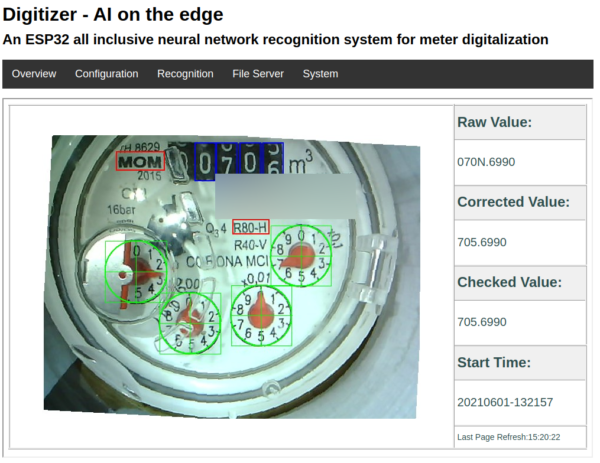
The process is quite simple and straightforward.
- Flash the ready made Firmware image to the module
- Configure the WiFi using a SD card
- Put the module directly over the meter
- Connect to it and setup the reference points and the meter recognition marks
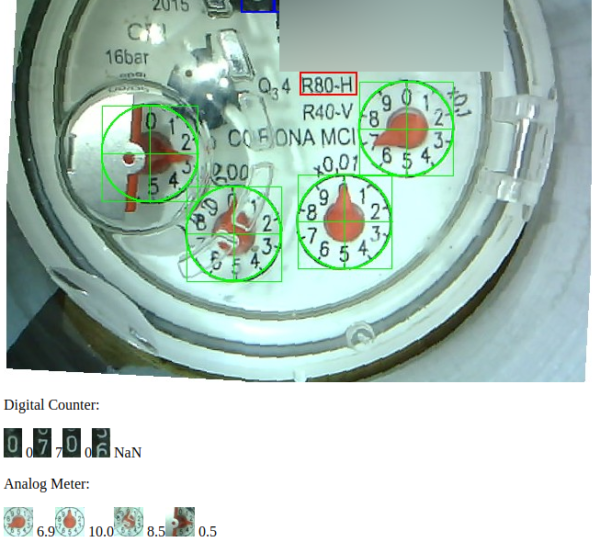
As you can see above all the recognition is done on the ESP32 module with its 4MByte of RAM.
With the data sent through MQTT it’s easy to draw nice graphs:
